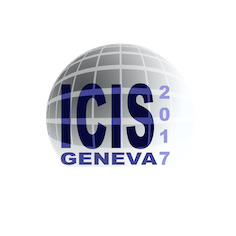Speaker
Description
Spatial non-uniformity of the surface produced negative ions ($\mathrm{H}^-$) has been one of the causes of non-uniform beam and the resultant short pulse duration time and insufficient power for QST’s (former JAEA) JT-60SA Negative Ion Source (NIS) [1]. Since the asymmetric feature of the high-energy electrons causes the spatial non-uniformity of the $\mathrm{H}^-$ on the Plasma Grid (PG) surface [2], a numerical analysis of the electrons inside the JT-60SA NIS has been conducted with the KEIO-MARC [3] ($\bf{K}$inetic $\bf{E}$lectron transport simulation of $\bf{IO}$n source plasmas in the $\bf{M}$ulti-cusp $\bf{ARC}$ discharge) code [4]. By modification of the filter magnet configuration in the JT-60SA NIS, the numerical results of negative ion production rate agrees reasonably with the extracted beam intensity in the experiment, and the improvement of the spatial uniformity has been observed [1, 2, 4]. However, we still see both qualitative and quantitative disagreements to some extent. This could be attributed to the fact that we have not compared the two results directly, i.e. the surface produced negative ions are not extracted directly but, once transported inside the NIS and then extracted as beams.
$\,\,\,\,\,\,$Therefore, the purpose of this study is to compare the calculated and the experimented beams directly by taking $\mathrm{H}^-$ transport and extraction into account. In order to do so, a 3D $\mathrm{H}^-$ trajectory calculation has been developed which is similar to the model developed by Sakurabayashi [5]. By comparing the numerical results with the experimental results [1, 2], the macroscopic features of the $\mathrm{H}^-$ transport and extraction will be discussed.
$\\$
References
[1] A. Kojima et. al., Nucl. Fusion $\bf{55}$, 063006 (2015).
[2] M. Yoshida et. al., Rev. Sci. Instrum. $\bf{85}$, 02B314 (2014).
[3] T. Shibata et. al., Rev. Sci. Instrum. $\bf{83}$, 02A718 (2012).
[4] S. Fujita et. al., AIP Conf. Proc. $\bf{1869}$, 030041 (2017).
[5] T. Sakurabayashi et. al., Rev. Sci. Instrum. $\bf{73}$, 1048 (2002).




